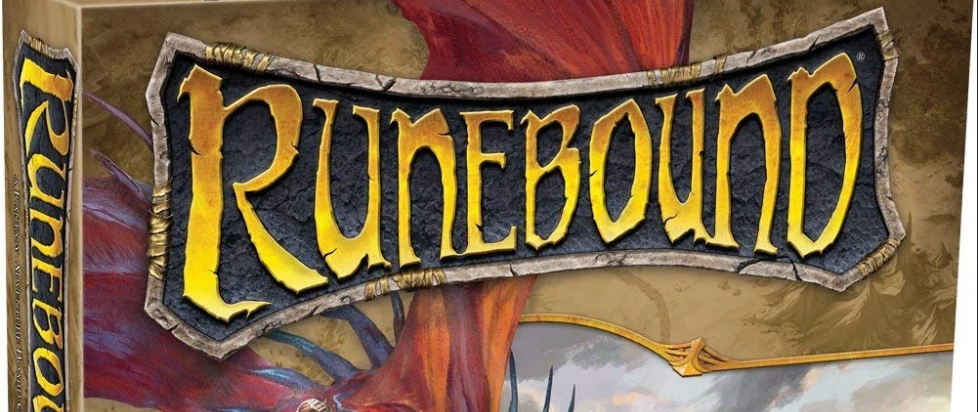
Rune Bound: Exploring the Realms of Terrinoth
I see board games in the store and they always look so cool and then I buy them and bring them home, I’m so excited to open them, and then I play them, like, twice… This column is dedicated to the love of games for those of us whose eyes may be bigger than our stomachs when it comes to playing, and the joy that we can all take from games, even if we don’t play them very often.
———
“I didn’t even know Descent had a setting.” That’s how a friend replied when I told him about the subject of this column. To be completely honest, I didn’t know it either, until I finally picked up the game a couple of years ago.
Of course, I assumed that it had at least the bare bones of a setting. Just what was necessary to get players into the meat of a dungeon crawl, most likely, and nothing more. It turns out I was wrong. Descent takes place in a fully fleshed out world, one every bit as developed as the average RPG campaign setting for D&D and the like, and one that has been expanded over numerous releases spanning more than two decades.
In fact, the realms of Terrinoth, as the setting is called, actually have their own tabletop roleplaying campaign book, serving as the default fantasy setting for Fantasy Flight’s proprietary Genesys system.
Terrinoth wasn’t designed for Descent, though, or for that roleplaying game. The setting actually predates the dungeon crawler by several years, first cropping up in largely forgotten games like 1998’s Battlemist and Diskwars in ‘99, a name and concept which were repurposed for a Warhammer tie-in in 2013. Later versions of the 1985 game Dungeonquest – originally published in Sweden and later brought to Anglophone countries by Games Workshop and, eventually, Fantasy Flight – were also folded into the world of Terrinoth.
The game that established the setting as we think of it today, however, was probably Runebound, the first edition of which hit shelves in 2004 – a year before the first edition of Descent. If Descent is an attempt to translate the RPG dungeon crawl to board game form, Runebound is a similar stab at the (less-well-known, outside RPG circles) hex crawl; an overland adventure where each hex represents a considerable amount of ground to cover. In fact, the logo for Runebound still decorates pretty much all of the games in the Terrinoth setting.

What are those games, exactly? The list is surprisingly long. Besides Descent itself and the others I’ve already mentioned, there’s the board game/war game hybrid BattleLore; a deck-building game called Rune Age that looks a lot like a fantasy version of Dominion (with more player-versus-player action); another tabletop wargame, this time called Runewars; and, more recently, the choose-your-own-adventure-style journaling game Legacy of Dragonholt and a card-based adventurer called Heroes of Terrinoth.
Furthermore, many of these games boast more than one release over the years. There have been several editions of Runebound, and expansions for same, not to mention the various iterations of Descent, including the fairly recent Descent: Legends of the Dark, which claims to not be a third edition of the classic dungeon crawler but come on, yes it is.
That seems like a lot of games, and it is. And I’ll admit that I haven’t played quite all of them yet, but I’ve dug through all of the boxes, set them all up, and played a fair few. They’re a mixed bag, but each one seems, at a glance, like a solid enough example of whatever it is. There’s interesting elements to all of them, and reading through the campaign book for the TTRPG setting helps to see how all the games fit together.
When I was just writing about Descent, I called Terrinoth a “fun mix of classic tropes and World of Warcraft-style cartoon gloss, with enough of its own character to keep it interesting,” and I stand by that. And the shared campaign world helps each game feel like it is part of a larger whole, giving each one the sense that there will always be more to explore just over the next hill – an appealing perk for games like these.
Naturally, the setting has its flaws, as any fantasy setting is bound to. It’s still racist against goblins, for example, even if it has “rehabilitated” orcs into a major player character group, while breathing at best slightly more life into them than the default “noble savages” we often see in such attempts.

Terrinoth lacks any attempt at gritty realism, reaching instead for the classic familiarity of a video game version of your standard high fantasy. Everything feels enough like a cliché that it’s easy to pick up quickly, while adding just enough character to distinguish it from the next setting across the way.
Thanks to Fantasy Flight’s somewhat perplexing release philosophy and the fact that the Genesys system already seems to have not exactly caught on, it’s unlikely that the Terrinoth setting will, either. Especially given that most of the games I mentioned are currently out of print. There have been a handful of novels published in the setting, tying into events in the campaign expansions for the second edition of Descent – an edition that was already basically out of print by the time the novels hit stands.
But while Terrinoth may not be a world that is robust enough to support the kind of multimedia campaign that games like Warhammer or Warcraft enjoy, as a place to park a handful of surprisingly good board games and a decently appealing TTRPG setting, it’s something of a delight.
———
Orrin Grey is a writer, editor, game designer, and amateur film scholar who loves to write about monsters, movies, and monster movies. He’s the author of several spooky books, including How to See Ghosts & Other Figments. You can find him online at orringrey.com.





